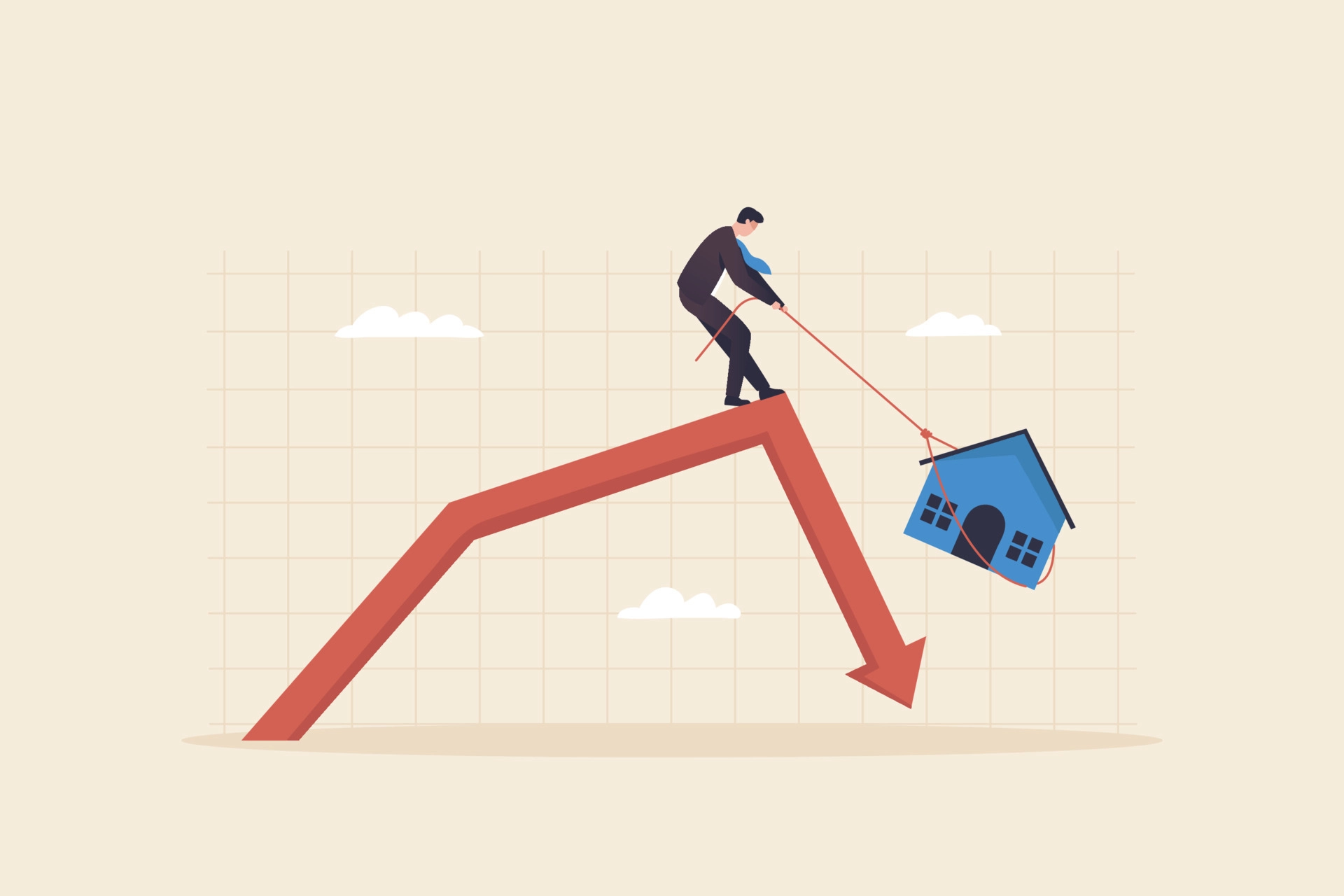5 Signs the Real Estate Market is Slowing Down

The real estate market is a complex and ever-evolving industry, with prices and trends changing from month to month. It can be difficult to keep up with all of the changes that take place, but it is important to know when the market is slowing down. While there are many signs that the market may be beginning to slow down, here are five of the most common indicators:
1. Prices Are Stagnating or Dropping
One of the most obvious sign that the real estate market is slowing down is when prices either stagnate or begin to drop. This could manifest in a variety of ways, such as lower-than-expected sale prices for particular properties or an overall decrease in median home values across an area. For example, if the average home in your area was worth $400,000 last year but has now dropped to $390,000 without any major shifts in factors like supply and demand, then this may be indicative of a general slowdown in the local market.
It’s important to remember that fluctuations are normal when it comes to real estate markets; just because you’ve seen some slight decreases doesn’t necessarily mean that there’s something wrong. However, if you see significant drops—especially over a short period of time—then it may be an indication that something more serious is going on and that you should pay close attention to other indicators as well.
2. The Number of Buyers Is Decreasing
The number of buyers in a particular area can have a huge impact on how quickly homes sell and at what price they’re sold at. If fewer people are looking for homes than normal—whether due to financial trouble caused by job losses during periods of economic distress or simply due to lack of interest—then it could be an indication that there’s a problem with the local real estate market.
You can check for this indicator by comparing sales data from different points in time; if fewer homes have been sold over a certain period then it could mean that fewer people are interested in buying right now. Additionally, you can also look into whether or not people are even still looking at listings; if potential buyers aren’t even making enquiries any more then it could be another sign that there’s something wrong with your local market.
Get your fair cash offer in 30 seconds
We make 200+ offers every day nationwide in every US city
3. Days On Market Are Increasing
Another telltale sign that something might be wrong with your local real estate market is when days on market (DOM) start increasing significantly over time. DOM refers to how long homes stay on the market before being sold; higher DOM numbers generally indicate slower sales activity than lower ones would suggest since it means that homes take longer sell than usual before eventually being bought by someone else.
This factor can vary from one location to another depending on factors such as population growth and income level, so paying attention to historical data will give you a better idea of whether or not your current DOM numbers are alarmingly high compared to previous years’ averages within your area.
4. Increased Inventories & Longer Selling Cycles
Along with days on market numbers going up thanks partly due to increased inventories across markets, another symptom indicative of slower sales activity is longer selling cycles overall—particularly if they’re taking longer than normal compared with previous years’ averages within certain areas. If you’re seeing particularly long selling cycles across certain neighborhoods or parts of town where they weren’t observed before then this could point towards slower sales activity than one would usually expect for these areas normally experience for this particular time frame..
Keep track of inventory levels too; increased inventories often suggest weakened demand since supply isn’t being met by enough buyers coming through who want those available listings – which again translates into slowed down activity within those locales experiencing higher inventories relative their past norms .
5. Mortgage Interest Rates Are Rising
Finally, mortgage interest rates play an immense role in determining how attractive homeownership will be for potential buyers who want financing for purchase transactions – which again affects overall demand levels and sales activity accordingly as these rates rise accordingly as well . Therefore , if mortgage interest rates start rising significantly over time , this could contribute towards dampening buyer interest further , thus resulting in slowed sales and decreased values throughout much affected geographic regions . You should keep track of both short term rate movements , like 30 day LIBOR , along with long term averages such as 10 year Treasury yields so you’ll have better clarity around what direction interest rates are heading overall .
In conclusion , while there may not always be definitive signs pointing towards an impending slump in any given real estate markets , understanding some key indicators out there like changes in pricing patterns , buyer behaviour shifts , longer DOM numbers due partly increased inventories across markets , along with rising mortgage interest rates – will allow agents & investors alike gain greater insights into greater depths about how their respective markets are faring overall , thus allowing them to plan ahead accordingly when markets start slowing down . By staying alert and on top of these signals , you’ll be better able to identify any potential market changes sooner so that you can adjust your strategy as needed and make the most of any opportunities presented by changing conditions in real estate.